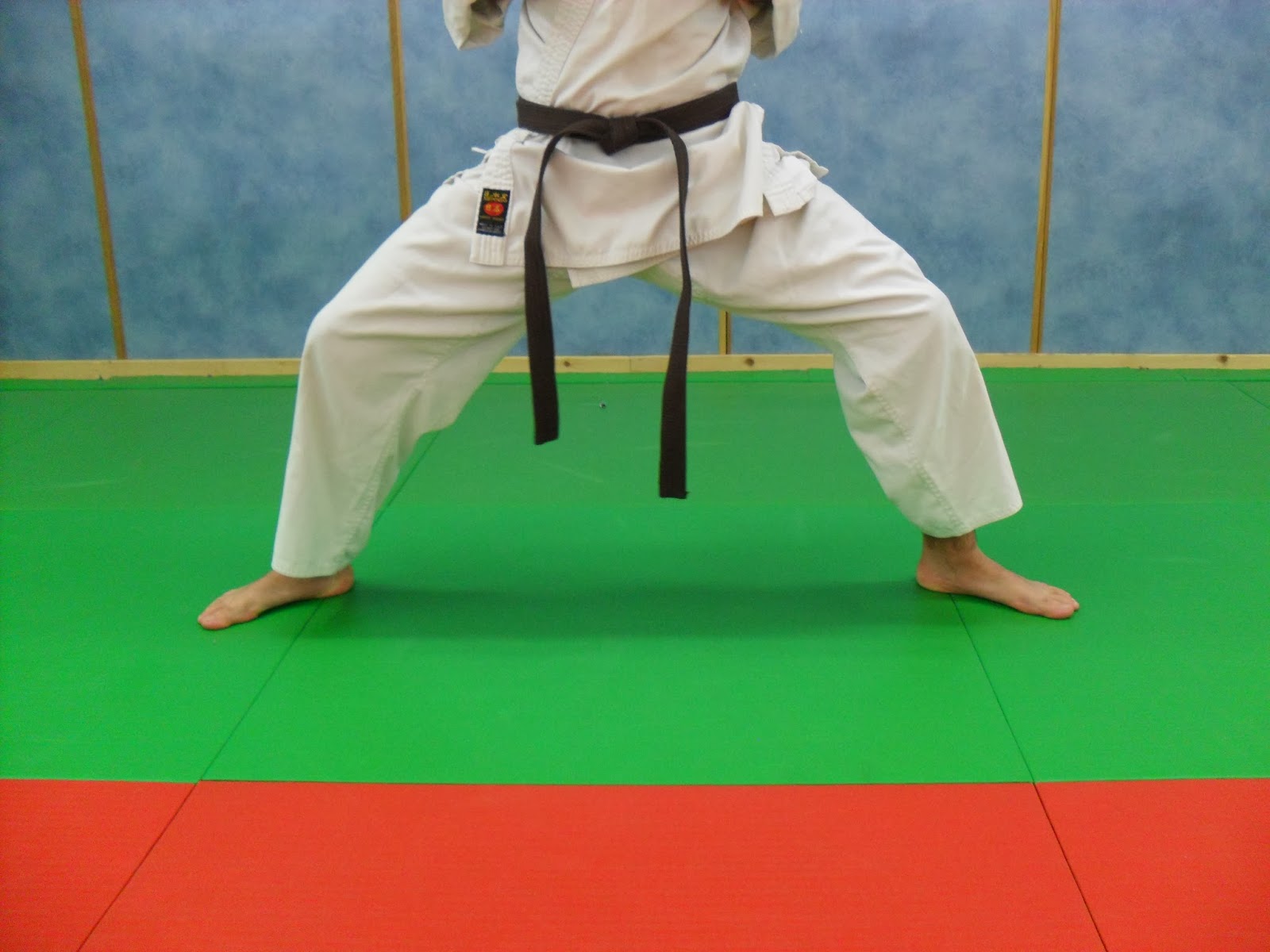★ Heisoku dachi
“Hei” means ‘to close’ and “soku” means ‘feet’. “Heisoku dachi” is the stance that you place both feet together, no opening between both feet from toes to heels.
“Hei” means ‘to close’ and “soku” means ‘feet’. “Heisoku dachi” is the stance that you place both feet together, no opening between both feet from toes to heels.
★ Musubi dachi
“Musubi” means ‘to tie/connect’. “Musubi dachi” is the stance that you open the both toes to 60 degrees from “heisoku dachi”. The heels are connected.
“Musubi” means ‘to tie/connect’. “Musubi dachi” is the stance that you open the both toes to 60 degrees from “heisoku dachi”. The heels are connected.
★ Heikou dachi
“Heikou” means ‘parallel’. You open the feet to your shoulder-width and the toes are facing to the front. Both
feet should be parallel.
★ Fudou dachi or Soto hachiji dachi/Soto hachinoji
dachi
“Fudou” means ‘not move/immobile’. From the position of “heikou dachi”, you move the toes outsides (60 degrees) then you are in the stance which you can stand immobile.
“Hachi-ji or hachi no ji” means ‘a letter 8’. In Japanese letter(kanji), 8 is written 八. It’s like the shape of “sanchin dachi” and sometimes we call sanchin dachi “hachiji dachi”. But here it has “soto” which means ‘outside’ before “hachiji” because the opening of the toes are toward outside. The stance looks like the reverse of the letter 八 (the heels are on the same line)
“Fudou” means ‘not move/immobile’. From the position of “heikou dachi”, you move the toes outsides (60 degrees) then you are in the stance which you can stand immobile.
“Hachi-ji or hachi no ji” means ‘a letter 8’. In Japanese letter(kanji), 8 is written 八. It’s like the shape of “sanchin dachi” and sometimes we call sanchin dachi “hachiji dachi”. But here it has “soto” which means ‘outside’ before “hachiji” because the opening of the toes are toward outside. The stance looks like the reverse of the letter 八 (the heels are on the same line)
★ Shiko dachi
“Shiko” is from the movement that sumo wrestlers do to
strengthen their legs. Please see the video to understand it. Note that the
toes are pointed out.
How to do "shiko" in sumo
So it is actually the same stance as this but you don’t lift up the legs in
karate training. Practicing this stance will help improve your flexibility like
all the sumo wrestlers who can open the legs 180 degrees!
★ Kiba dachi
“Kiba” means a trooper/soldier on a horse. It is almost like “shiko dachi” but
you place the toes to the front and knees remain outwards. “Kiba-dachi’ is the
stance that you imagine like riding a horse and you have to fight, so your
bottom is down(sitting pose) but you need to put the power into both legs (not
to fall from the horse)
I explained
about “fudou dachi” and “sanchin dachi” also in No. 11 and “kiba dachi” in No.
15






Megumi-san, your explanations are wonderful, and greatly appreciated! Keep writing...
ReplyDeleteNigel
Nigel-san arigato gozaimasu!
Delete